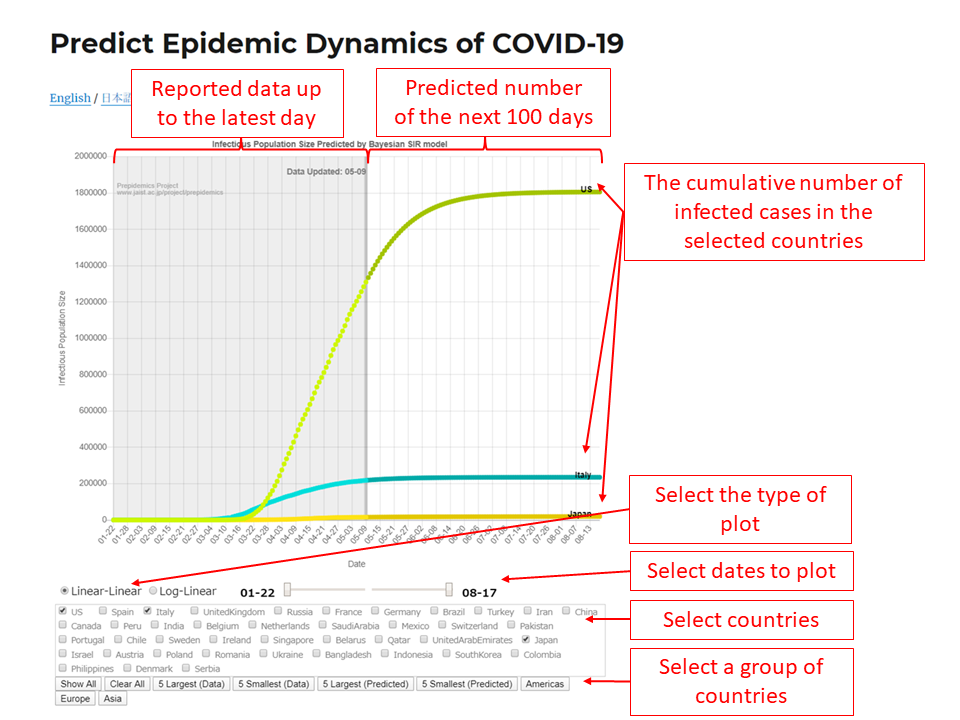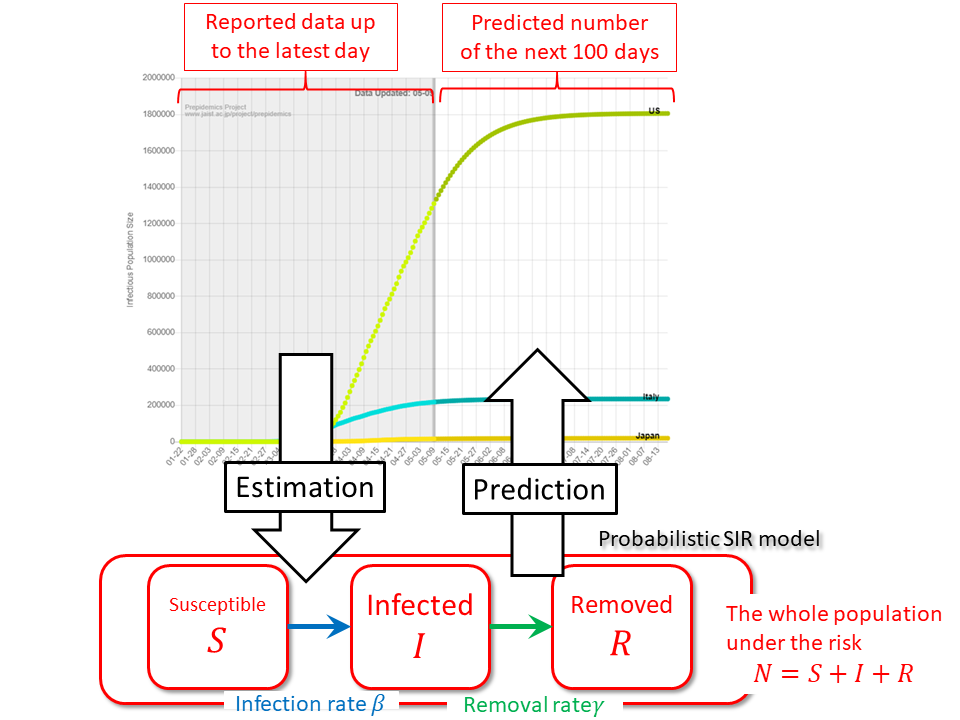English / 日本語
(How to read the graph/ 予測結果の見方)
-
How to read the graph
You can choose the countries and dates interactively with the visualization as follows.

-
How do we make a prediction?
As illustrated below, our prediction takes two steps: Estimation and Prediction.
(1) Estimation
We used the data provided by Johns Hopkins University CSSE to estimate a probabilistic SIR model, which is a probabilistic modified version of the SIR model. The SIR model is one of the standard compartment model in epidemiology, and it has three states, Susceptible (S), Infected (I), and Removed (R) (the red box at the bottom of the figure below). This model simply sort the whole population $N = S + I + R$ into the three groups. The susceptible group has individuals which may be infected in future, the infected group has infected individuals, and the removed group has individuals immune to the disease or died from it (both together “removed” from the epidemic dynamics). Each individual in the whole population moves from S to I, and I to R, in this order by a certain infection rate $\beta$ and removal rate $\gamma$. This process is simulated as a certain probabilistic model. In Estimation, the data, the cumulative number of infected individuals in the report on each country, is used to choose which model with the three unknown values, $N, \beta, \gamma$.
(2) Prediction
In Prediction, the estimated model is used to generate the expected data in future (next 100 days). Thus, this prediction works under the assumption that the current situation is kept being as it is. Therefore, this prediction may not be very reliable, if the society newly takes a population-wide social action such as a lockdown, we have a mutation of corona virus , or the idealized assumption of the probabilistic SIR model itself is implausible. Moreover, the probabilistic SIR model is still not its final form but under development, and thus its predictive accuracy may be limited.
